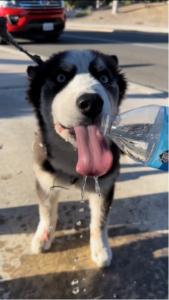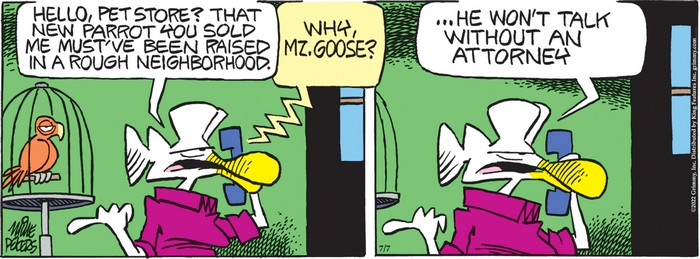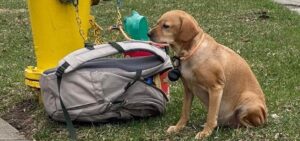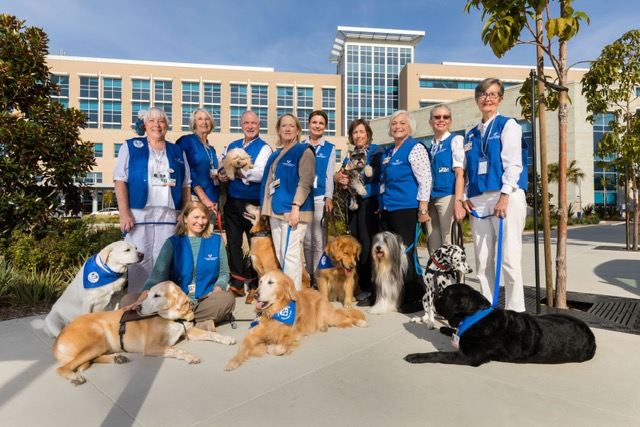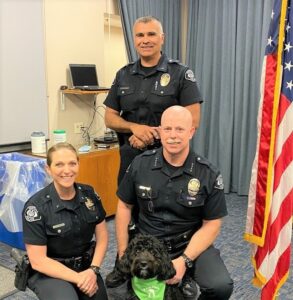 ∙ Members of the National Association of Insurance Commissioners (NAIC) passed a pet insurance model act, which institutes regulatory standards for pet coverage including consumer protections, rules for preexisting conditions and training requirements. States would still need to adopt the model law either as written or in a modified form.
∙ Members of the National Association of Insurance Commissioners (NAIC) passed a pet insurance model act, which institutes regulatory standards for pet coverage including consumer protections, rules for preexisting conditions and training requirements. States would still need to adopt the model law either as written or in a modified form.
“This model law establishes clear rules for the sale of pet insurance and provides important disclosures to pet owners interested in purchasing this product,” Beth Dwyer, superintendent of insurance for the Rhode Island Department of Business Regulation, said in a release. “Now, it is up to the states to see if they would like to adopt or modify the model law for this regulatory framework to be in effect.” (HealthDay News)
∙ Getting fit with fido is a win-win for everyone, a new Canadian study finds. While previous research has shown that dog owners tend to get more exercise than folks without dogs, the new study shows that dogs with more active owners also get more exercise.
Obesity in dogs is on the rise, and dogs who are overweight face a number of health problems, such as diabetes and heart disease.
For the study, researchers analyzed results from a survey of nearly 3,300 dog owners in France, Germany, the United Kingdom, Canada and the United States. The survey looked at owners’ and dogs’ diets and exercise routines, along with the owner’s perception of their dog’s weight.
The bottom line? Dogs got more exercise if their owners spent more time exercising. More active owners were also more likely to perceive their dog as having an ideal body weight, the survey showed.
Vigorous exercise for dogs included running, playing ball or swimming, while moderate exercise was defined as walking, hiking or visiting the dog park.
Folks who didn’t perform more than 15 minutes of vigorous exercise weekly were less likely to report that their dog performs vigorous exercise, the study showed.
Dog owners who performed moderate exercise for more than five days per week were more likely to exercise their dogs for 60 minutes to 90 minutes or more per day, the study showed.
“We encourage dog owners to include exercise as part of their dog’s daily routine,” she said. “If the dog is overweight, starting with smaller bouts of less intense exercise, such as a walk around the block, is a great way to gradually incorporate exercise into your dog’s routine.”
The study is published in the Aug. 24 issue of PLOS ONE.
∙ A new study from North Carolina State University explores the connection between hearing loss and dementia in geriatric dogs. The work could aid in both treatment of aging dogs and in understanding the relationship between sensory loss and cognitive function in dogs.
“In humans, we know that age-related hearing loss is estimated to affect one-third of people over age 65,” says Natasha Olby, the Dr. Kady M. Gjessing and Rahna M. Davidson Distinguished Chair in Gerontology at North Carolina State University and corresponding author of the study.
“We also know that the rate of cognitive decline is approximately 30-40% faster in people with age-related hearing loss and that hearing loss is a greater contributor to dementia risk than other factors such as hypertension or obesity. But we don’t understand whether the same holds true for dogs.”
In the study, Olby and colleagues evaluated 39 senior or geriatric dogs. Auditory and cognitive tests were performed on each dog and their owners were asked to fill out two commonly used questionnaires – one focused on cognitive ability and the other on quality of life. Cognitive testing, questionnaire scores and age were compared between hearing groups.
The “average” dog can hear tones at 50 decibels (dBs) with no difficulty. Of the study cohort, 19 of the dogs could hear at 50 dBs, 12 at 70 dBs, and eight at 90 dBs (roughly equivalent to the noise made by a jet plane at takeoff). The average age of the dogs within each group were 12, 13 and 14 years old, respectively.
When the researchers compared the hearing results with owners’ quality of life questionnaire responses, they found that scores related to vitality and companionship declined significantly as hearing deteriorated.
Similarly, cognitive questionnaire scores ranked all eight of the dogs in the 90 dB group as abnormal, compared to nine of the 12 in the 70 dB group and eight of the 19 in the 50 dB group. Results from cognitive testing were similar: as hearing declined, so did the dog’s ability to perform tasks.
“Hearing loss is one of the biggest predictors of dementia in people,” Olby says. “Hearing loss also contributes to falls in elderly people, as sensory decline contributes to a loss in motor skills. So the connection between physical and neurological decline is clear for humans.
“This study indicates that the same connection is at work in aging dogs. But since we can potentially treat hearing loss in dogs, we may be able to alleviate some of these other issues. By quantifying neurological and physiological changes in elderly dogs, we’re not only improving our ability to identify and treat these issues in our pets, we’re also creating a model for improving our understanding of the same issues in humans.”
The study appears in the Journal of Veterinary Internal Medicine. Margaret Gruen, assistant professor of behavioral medicine at NC State, is co-senior author of the work.
By Linda Carroll
“Gifted” dogs, who have a rare talent for learning lots of words for objects easily, also turn out to be more playful than other dogs, a new study finds.
Prior research in humans has shown a link between playfulness and problem-solving abilities, so animal behavior researchers from Eötvös Loránd University in Budapest, Hungary, wondered if the same was true for rollicking pups.
What is a gifted dog? In the new study, it was Border collies who had proven in prior research that they were able to learn as many as 12 new words per week and then retain them for months.
To take a closer look at the possible association between giftedness and playfulness in dogs, Claudia Fugazza, a researcher in the university’s department of ethology (the study of animal behavior), and her colleagues asked the owners of 165 Border collies to fill out dog personality questionnaires. Twenty-one of the dogs were gifted and the other 114 were just randomly selected with no testing for word learning ability.
The surveys assessed the personality of the animals in five categories:
Fearfulness, including fear of people, nonsocial fear, fear of dogs, fear of handling.
Aggression toward people, including general aggression and aggression in certain situations.
Activity/Excitability, including excitability, playfulness, active engagement and companionability.
Responsiveness, such as trainability and controllability.
Aggression toward animals, including aggression toward dogs, prey drive and dominance over other dogs.
For the evaluation of playfulness the owners were asked to rate their dogs in three areas:
Dog gets bored in play quickly.
Dog enjoys playing with toys.
Dog retrieves objects, such as balls, toys and sticks.
The researchers focused solely on Border collies because earlier experiments found that the breed is more likely to be good at learning new words compared to others.
After collecting the survey responses, the researchers then compared the responses from owners of gifted dogs to those from the owners of dogs who had not been identified as gifted.
Playfulness was the only personality trait that was consistently different between the two groups.
It’s not clear from the study whether it’s the playfulness that helps the dogs learn more words, or whether the extra playful ones ended up with more opportunities to learn, said Fugazza, the study’s lead author, said in an email. That’s because gifted dogs tend to learn words for objects when their owners are playing with them.

